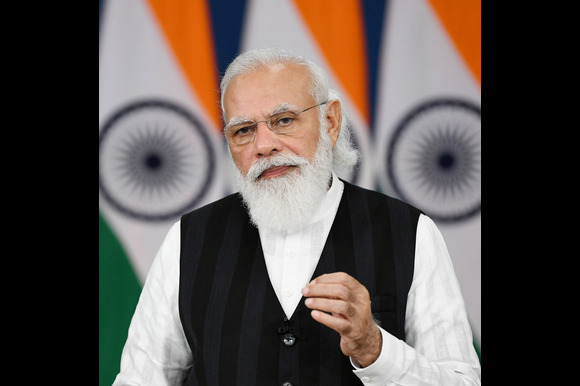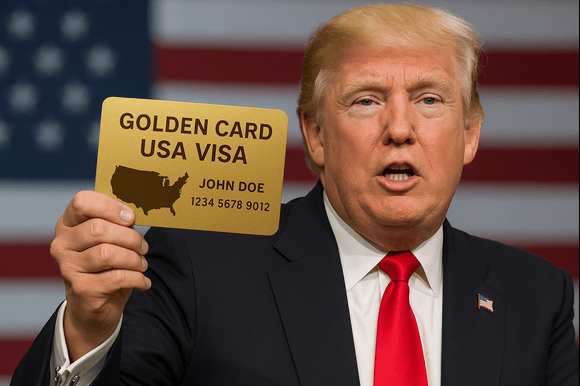
By Prime Minister's Office (GODL-India)
A sweeping new wave of US tariffs on Indian goods took effect on Wednesday, with Washington imposing duties of up to 50% in retaliation for Delhi’s continued purchases of Russian oil and military hardware.
The unprecedented trade measure—among the steepest levies in the world—includes a 25% surcharge on transactions involving Moscow, which the US says bankrolls its war in Ukraine.
India, however, has shown no signs of scaling back its imports, dismissing the tariffs as unjust. Officials in Delhi argue that buying oil at the “best possible price” is essential to safeguard the needs of the country’s 1.4 billion people. Yet, economists warn that the penalties could dent exports and growth in the world’s fifth-largest economy. Until recently, the US ranked as India’s top trading partner.
The move has jolted the Indian government into crisis-management mode.
Earlier this month, Prime Minister Narendra Modi pledged sweeping tax relief to blunt the damage of tariffs, which threaten millions of jobs across export-oriented industries supplying everything from textiles and diamonds to seafood for American consumers.
Promising what he called a Diwali “gift” for the people, Modi said a “massive tax bonanza” was on the way for households and small businesses, the backbone of Asia’s third-largest economy.
Speaking during Independence Day celebrations from the ramparts of Delhi’s Red Fort—dressed in a saffron turban before a cheering crowd—Modi urged retailers and entrepreneurs to put up signs declaring their goods as Swadeshi or “Made in India.”
“We must become self-reliant, not out of despair but out of pride,” he declared. “Economic selfishness is spreading worldwide. Instead of crying over our challenges, we must rise above them and refuse to be held hostage.”
The prime minister has since repeated his call at multiple public events, hammering home the dual message: manufacture in India, and spend in India.
However, boosting domestic manufacturing remains an uphill task. Despite years of subsidies and incentive schemes, the sector’s share of India’s GDP has stagnated at around 15%.
Where Modi may find more traction is in tax reforms that immediately free up disposable income. After announcing a $12 billion income tax giveaway earlier this year, his government is now preparing a sweeping overhaul of the goods and services tax (GST), the nationwide levy introduced eight years ago to replace a maze of local duties.
Although GST was designed to simplify India’s tax regime, experts argue that multiple thresholds and exemptions have made compliance complex. Analysts have long pressed for a streamlined system.
Now, the finance ministry has unveiled proposals for a simplified two-tier GST, a move estimated to be worth roughly $20 billion. Combined with existing income tax cuts, it could provide what analysts at US brokerage Jefferies described as “a meaningful push to consumption.”
Household spending drives nearly 60% of India’s GDP. While rural demand—buoyed by a bumper harvest—remains strong, urban consumption has slowed amid wage stagnation and job cuts in major sectors such as information technology since the pandemic.
Modi’s tax stimulus should reinvigorate consumption and ease inflationary pressures, according to investment bank Morgan Stanley. “This is particularly crucial against the backdrop of global geopolitical tensions and adverse tariff-related developments that could weaken external demand,” the bank said.
Consumer-oriented industries—such as two-wheelers, compact cars, garments, and even construction materials like cement—are expected to be among the biggest beneficiaries, with demand typically peaking around Diwali.
Most economists believe that any revenue losses from lower GST rates can be offset through higher-than-expected tax collections and greater dividends from the Reserve Bank of India.
Swiss lender UBS noted that GST reductions would have a stronger “multiplier effect” than earlier income and corporate tax cuts, since they directly impact consumer purchases. That could spur fresh spending. Modi’s tax measures may also pave the way for another interest rate cut by the central bank, which has already lowered rates by 1% in recent months to encourage lending.
Additional fiscal stimulus is set to come early next year, when pay raises for nearly five million government employees and 6.8 million pensioners take effect, adding further fuel to domestic demand.
The stock market has responded positively, cheering both the tax measures and India’s unexpected sovereign rating upgrade from S&P Global—the first in 18 years. The higher rating signals reduced lending risk, which could lower borrowing costs for the government and attract fresh foreign investment.
Still, India’s economic momentum has cooled from the 8% growth rates seen a few years ago. The trade standoff with Washington only deepens the external challenges.
Talks to resolve trade issues were abruptly called off this week, as the rhetoric between Delhi and Washington over Russian energy purchases escalated.
At 50%, the new tariffs amount to what many experts describe as a de facto sanction on trade between two of the world’s largest economies—a scenario unimaginable just months ago.




